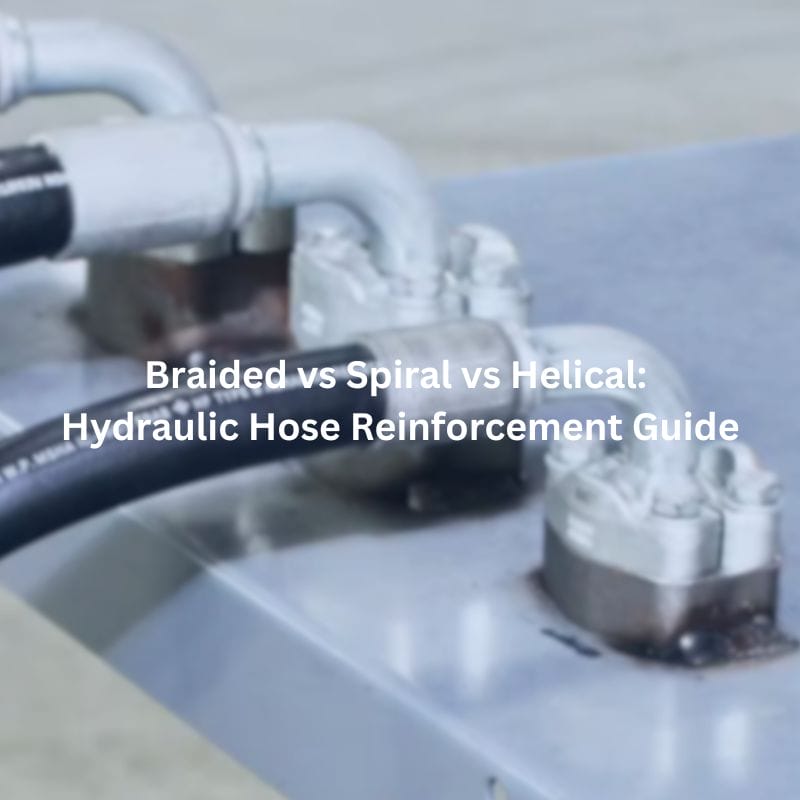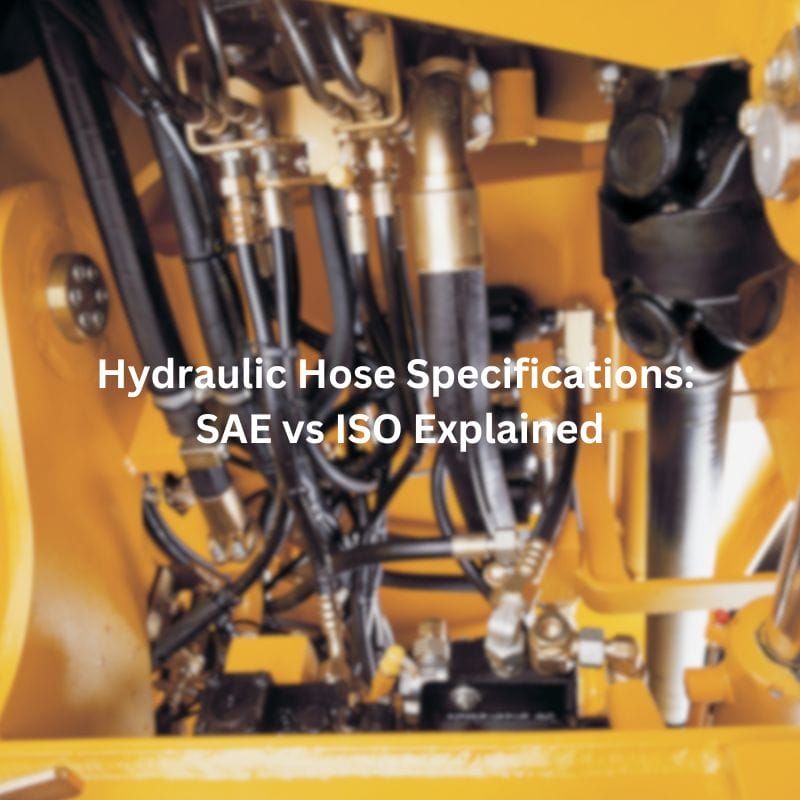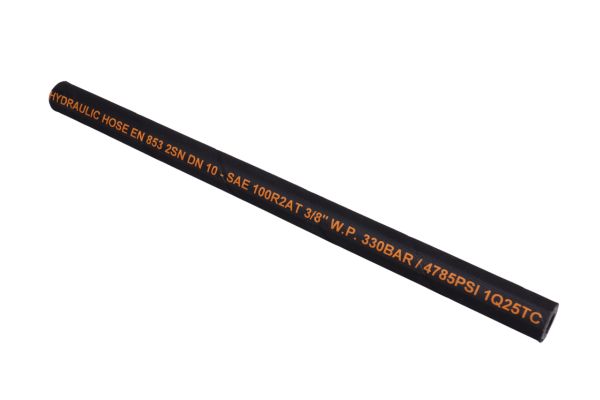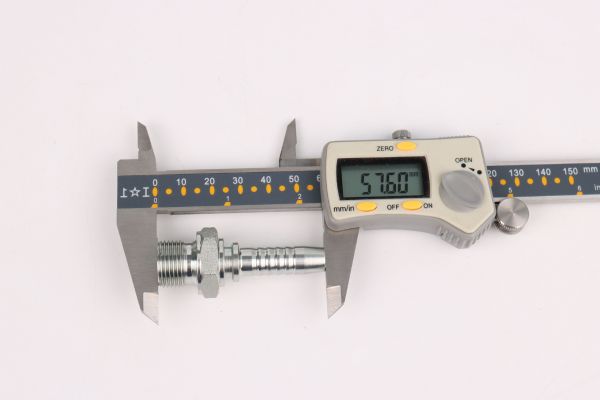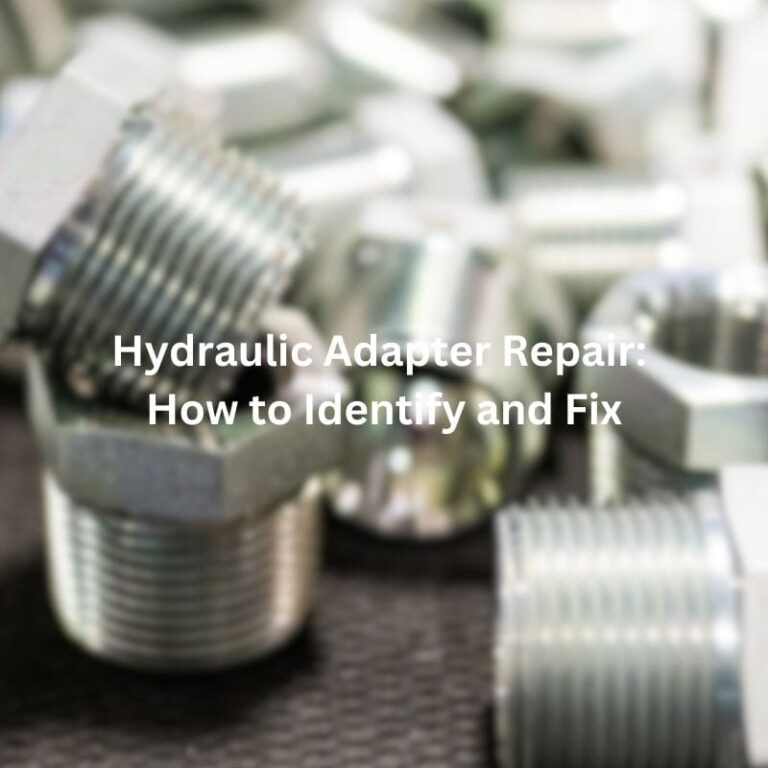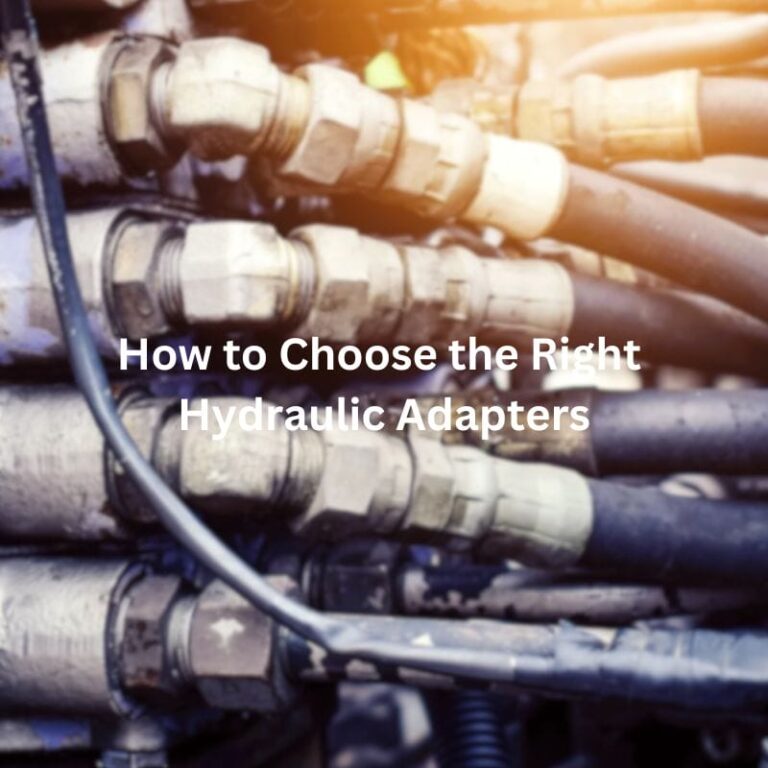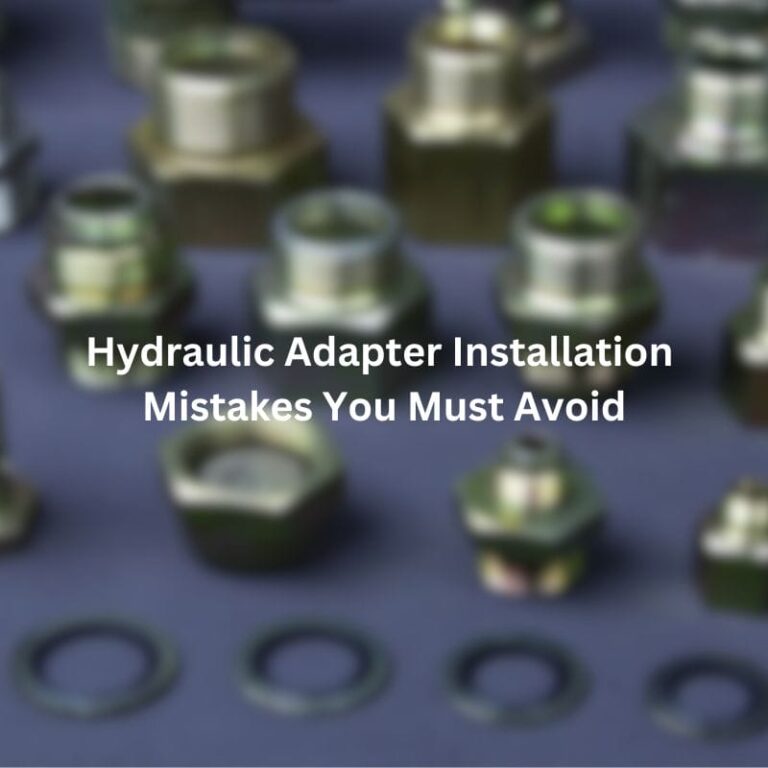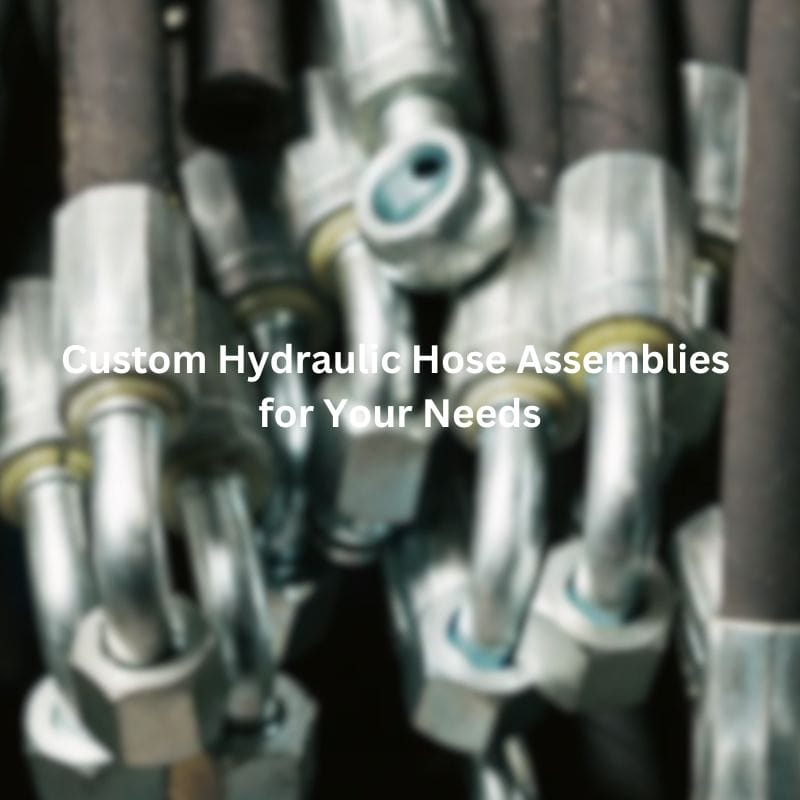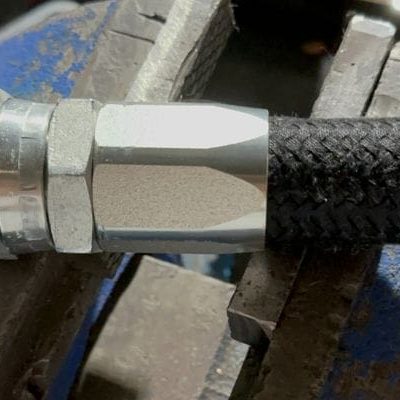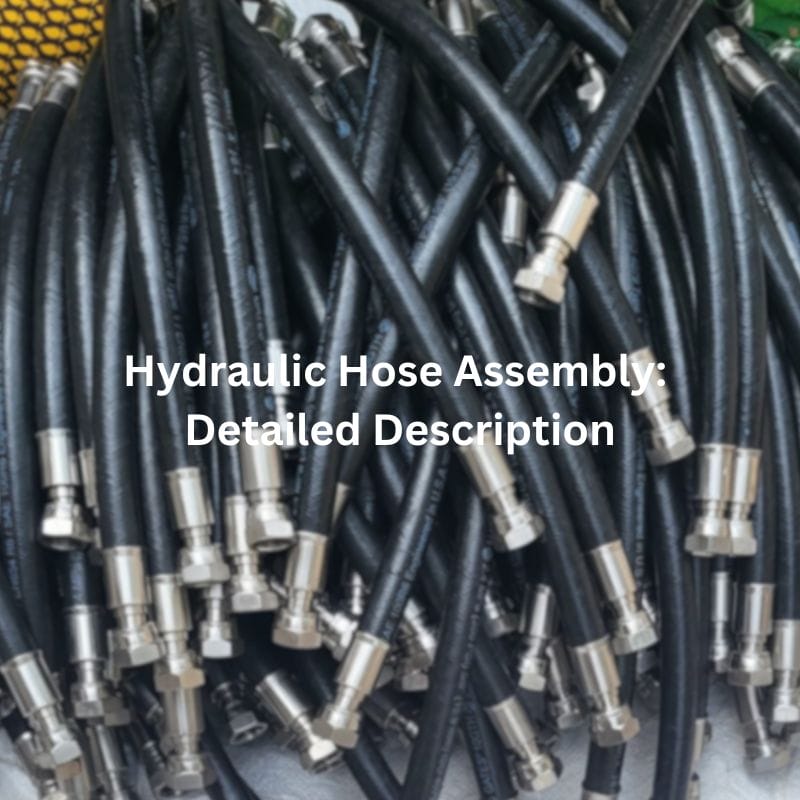Braided vs Spiral vs Helical: Hydraulic Hose Reinforcement Guide
Table of Contents
Introduction
Hydraulic hoses are critical components in hydraulic systems, designed to transmit fluid power between various parts of machinery. These hoses are essential in numerous industries, including construction, manufacturing, and agriculture, providing flexibility and strength to handle high-pressure fluids. Reinforcement within hydraulic hoses is vital as it significantly enhances the hose’s ability to withstand high pressures and harsh operating conditions. It provides the necessary strength and durability, preventing hose failure and ensuring the smooth operation of hydraulic systems.
Understanding Hydraulic Hose Reinforcement
Definition and Role of Reinforcement
Reinforcement in hydraulic hoses is a critical component designed to enhance the hose’s strength, flexibility, and durability. This reinforcement typically consists of multiple layers of materials such as steel wire or synthetic fibers, which are embedded within the hose structure. The primary function of the reinforcement is to support the hose against the internal pressures exerted by the hydraulic fluid as well as external forces and environmental conditions the hose may encounter.

Purpose and Function
Internal Pressure Resistance: The reinforcement layer helps the hose withstand high internal pressures without bursting or deforming. This is crucial for maintaining the integrity and efficiency of hydraulic systems that operate under varying pressure levels.
Flexibility and Bend Radius: While providing strength, the reinforcement also allows the hose to remain flexible, facilitating easier installation and maneuverability in tight spaces. Different reinforcement patterns can influence the bend radius and flexibility of the hose.
External Force Resistance: In addition to internal pressures, hydraulic hoses may be subjected to external forces such as abrasion, impact, and environmental stressors. The reinforcement layer protects the hose from these external threats, extending its lifespan and reliability.
Structural Support: The reinforcement maintains the structural integrity of the hose, preventing it from collapsing under vacuum conditions or kinking during operation.
Material Composition
Steel Wire: Commonly used for its high tensile strength and durability, steel wire reinforcement is often found in spiral and braided patterns. It provides excellent pressure resistance and is suitable for high-pressure applications.
Synthetic Fibers: Materials such as polyester, aramid, and nylon are used for their lightweight, flexibility, and resistance to corrosion and chemicals. These fibers are typically used in braided reinforcement, offering a balance of strength and flexibility.
Factors Influencing Reinforcement Choice
Selecting the appropriate reinforcement for hydraulic hoses involves considering various factors to ensure optimal performance and longevity of the hose in its specific application. Key factors include:
Operating Pressure
System Pressure Requirements: The maximum and average operating pressures of the hydraulic system dictate the type of reinforcement needed. Higher pressures generally require stronger reinforcement, such as spiral steel wire.
Pressure Surges: Systems with frequent pressure spikes or surges may necessitate more robust reinforcement to handle these sudden increases without compromising the hose.
Flexibility Requirements
Bend Radius: The required bend radius, or the minimum radius a hose can bend without kinking, influences the choice of reinforcement. Braided hoses offer greater flexibility and a tighter bend radius compared to spiral hoses.
Installation Space: In applications with limited space, flexible hoses with braided reinforcement may be preferred for easier routing and installation.
Environmental Conditions
Temperature Range: The operating temperature of the hydraulic system and the surrounding environment affect the material choice for reinforcement. Some materials perform better under extreme temperatures, while others may degrade.
Chemical Exposure: The presence of chemicals, oils, and other fluids can impact the durability of the reinforcement materials. Synthetic fibers often provide better resistance to chemical exposure compared to steel wire.
Abrasive Conditions: Environments with high abrasion risk require reinforcement materials that can withstand wear and tear, such as steel wire.
Application Specifics
Industry Standards: Different industries have specific standards and requirements for hydraulic hoses. Understanding these standards helps in selecting the appropriate reinforcement.
Dynamic vs. Static Applications: Dynamic applications, involving constant movement and flexing, require more flexible reinforcement compared to static applications where the hose remains stationary.
Braided Reinforcement
Description and Structure
Braided reinforcement is a type of hydraulic hose construction that involves interweaving strands of material, such as stainless steel or synthetic fibers, to create a strong yet flexible reinforcement layer. This braiding technique enhances the hose’s ability to withstand internal pressures and external forces while maintaining flexibility.
Materials Used
Stainless Steel: Known for its high tensile strength and resistance to corrosion, stainless steel is a popular choice for braided reinforcement, particularly in high-performance and demanding environments.
Synthetic Fibers: Materials like polyester and aramid fibers (e.g., Kevlar) are used for their lightweight properties, flexibility, and resistance to chemicals and abrasion. These fibers offer a good balance of strength and flexibility, making them suitable for a variety of applications.

Braiding Patterns
Single Braid: A single layer of braided material provides moderate strength and flexibility, suitable for low to medium pressure applications.
Double Braid: Two layers of braided reinforcement enhance the hose’s strength and pressure capacity while maintaining flexibility. This pattern is used in applications requiring higher pressure resistance.
Multiple Layers: For even greater strength and durability, multiple layers of braiding can be employed. This configuration is used in more demanding applications where both high pressure and flexibility are required.
Advantages
Flexibility: One of the primary advantages of braided hoses is their superior flexibility. The interwoven structure allows the hose to bend and flex easily, making it ideal for applications where tight bends and maneuverability are required.
Cost-Effectiveness: Braided hoses are generally less expensive to manufacture compared to spiral hoses. The materials used in braiding, such as synthetic fibers, are often cheaper than high-tensile steel wires used in spiral reinforcement.
Ease of Manufacturing: The braiding process is relatively straightforward, contributing to lower production costs and faster manufacturing times. This makes braided hoses an economical choice for many applications.
Limitations
While braided hoses offer many advantages, they also have some limitations that must be considered when selecting the appropriate reinforcement type.
Lower Pressure Capacity Compared to Spiral: Although flexible, braided hoses cannot withstand as high pressures as spiral-reinforced hoses. For high-pressure applications, spiral reinforcement may be necessary to ensure safety and performance.
Potential for Kinking: Under certain conditions, braided hoses may be more prone to kinking compared to spiral or helical hoses. This can occur if the hose is bent too sharply or if it is used in an application where it is repeatedly flexed or twisted. Kinking can compromise the hose’s performance and lead to premature failure.
Spiral Reinforcement
Description and Structure
Spiral reinforcement is a method used in hydraulic hoses that involves wrapping high-tensile steel wire around the hose core in a helical pattern. This construction method provides exceptional strength and enables the hose to withstand extremely high pressures, making it ideal for demanding applications.
Materials Used
High-Tensile Steel Wire: The most common material for spiral reinforcement is high-tensile steel wire due to its superior strength and durability. The high tensile strength ensures that the hose can handle extreme pressures without bursting or deforming.
Spiral Patterns
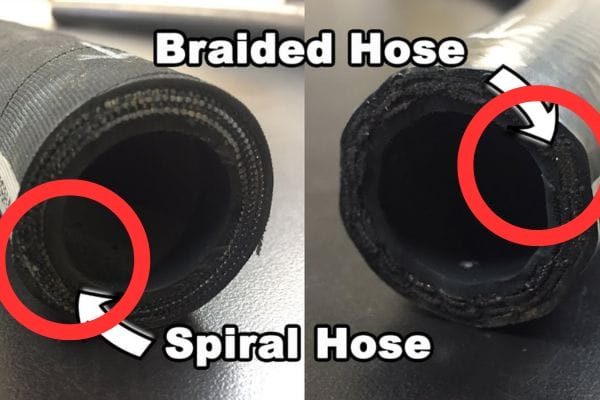
Layered Construction: The steel wires are wound in multiple layers around the hose, with each layer typically alternating in direction. This alternating pattern maximizes the hose’s strength and prevents it from expanding under pressure. The number of layers can vary depending on the required pressure rating and the application. Common configurations include four-layer and six-layer constructions.
Helical Winding: The helical winding of the steel wires provides a continuous reinforcement structure that distributes pressure evenly along the length of the hose. This design helps to prevent localized stress points and enhances the hose’s overall durability.
Advantages
Superior Pressure Handling: One of the primary advantages of spiral-reinforced hoses is their ability to handle very high pressures. The robust construction allows these hoses to operate reliably in high-pressure environments, making them suitable for applications where braided hoses might fail.
Consistent Performance: Spiral hoses maintain their performance under high pressure conditions, ensuring consistent and reliable operation in demanding systems.
Limitations
While spiral-reinforced hoses offer significant advantages, they also come with some limitations that must be considered.
Stiffness: The primary drawback of spiral hoses is their reduced flexibility compared to braided hoses. The rigid structure of the spiral reinforcement makes these hoses less suitable for applications requiring tight bends or frequent movement.
Installation Challenges: The reduced flexibility can make installation more challenging, especially in confined spaces where the hose needs to navigate around obstacles.
Helical Reinforcement
Description and Structure
Helical reinforcement is a construction technique for hydraulic hoses that involves winding steel wire in a helical (spiral) pattern around the hose. This type of reinforcement provides a balance of strength and flexibility, tailored for specific applications where resistance to kinking and crushing is crucial.
Materials Used
Steel Wire: The primary material used in helical reinforcement is steel wire. Steel wire offers significant tensile strength and durability, ensuring the hose can withstand external pressures and physical impacts.
Helical Patterns
Helical Winding: The steel wire is wound in a continuous helical pattern around the hose core. This helical winding helps distribute forces evenly along the hose’s length, enhancing its resistance to kinking and crushing while maintaining adequate flexibility.
Layer Configuration: Helical hoses can have single or multiple layers of helical reinforcement, depending on the required strength and application. Multiple layers increase the hose’s durability and pressure-handling capability within its specific use cases.
Advantages
Resistance to Crushing and Kinking:
Crush Resistance: Helical reinforcement prevents the hose from collapsing under external pressure, making it ideal for applications where the hose might be subjected to physical compression.
Kink Resistance: The helical pattern ensures that the hose maintains its structural integrity even when bent, reducing the risk of kinking, which can obstruct fluid flow and damage the hose.
Good Flexibility in Certain Applications:
Moderate Flexibility: While not as flexible as braided hoses, helical hoses offer sufficient flexibility for many applications. This flexibility allows for easier installation and routing in systems where the hose needs to navigate around obstacles.
Application Versatility: The balance of flexibility and strength makes helical hoses suitable for applications such as suction and return lines, where moderate flexibility and resistance to external pressures are required.
Limitations
While helical-reinforced hoses offer distinct advantages, they also have limitations that restrict their use to specific applications.
Pressure Limitations: Helical hoses are not designed to withstand high internal pressures. Their construction focuses on flexibility and resistance to external pressures rather than handling extreme internal forces. For high-pressure applications, spiral or braided reinforcement is typically required.
Comparative Analysis
Pressure Ratings
When selecting hydraulic hoses, understanding the pressure ratings of different reinforcement types is crucial for ensuring system safety and efficiency.
Spiral-Reinforced Hoses:
Highest Pressure Capacity: Spiral-reinforced hoses are designed to handle extremely high pressures, making them suitable for the most demanding hydraulic applications. The multi-layered construction of high-tensile steel wire in a helical pattern provides the necessary strength to withstand internal pressures without bursting or deforming.
Consistent Performance Under Pressure: These hoses maintain their integrity and performance even under frequent and significant pressure spikes, ensuring reliable operation in high-stress environments.
Braided Hoses:
Moderate to High Pressure Capacity: Braided hoses offer a good balance between flexibility and pressure resistance. They can handle moderate to high pressures, making them versatile for a wide range of applications.
Single and Double Braiding Options: Depending on the specific pressure requirements, braided hoses can be constructed with single or double layers of reinforcement. Double-braided hoses offer higher pressure ratings compared to single-braided ones.
Helical Hoses:
Lowest Pressure Capacity: Helical-reinforced hoses have the lowest pressure ratings among the three types. They are designed for applications where high pressure is not a primary concern but resistance to kinking and crushing is essential.
Suitable for Low-Pressure Systems: These hoses are ideal for low-pressure systems, such as suction and return lines, where maintaining structural integrity under external compression is more important than withstanding high internal pressures.
Selecting the Right Reinforcement
Assessing System Requirements
Selecting the appropriate reinforcement for hydraulic hoses begins with a thorough evaluation of the system requirements. This involves understanding the specific demands and conditions under which the hose will operate to ensure optimal performance and longevity.
Operating Pressure:
Pressure Levels: Identify the maximum and average operating pressures of the hydraulic system. High-pressure systems require stronger reinforcement, such as spiral hoses, while lower-pressure systems can utilize braided or helical hoses.
Pressure Surges: Consider the frequency and magnitude of pressure surges or spikes. Systems with frequent or significant pressure variations need hoses with higher pressure ratings to prevent failures.
Flexibility Needs:
Bend Radius: Determine the required bend radius, or the minimum radius the hose can bend without kinking. Applications with tight bends or complex routing may benefit from the flexibility of braided hoses.
Movement and Vibration: Assess the extent of movement and vibration in the system. Dynamic applications, where hoses move frequently, require flexible reinforcement to avoid fatigue and failure.
Environmental Conditions:
Temperature Range: Identify the operating temperature range. Some materials perform better in extreme temperatures, influencing the choice of reinforcement. For example, certain synthetic fibers are more resistant to high temperatures than others.
Exposure to Elements: Evaluate exposure to elements such as sunlight, moisture, and chemicals. These factors can affect the durability and performance of the hose reinforcement. Materials like stainless steel offer good resistance to environmental degradation.
Evaluating Environmental Factors
The environment in which the hydraulic hose will operate plays a crucial role in determining the suitable reinforcement type. Environmental factors can significantly impact the hose’s durability and performance.
Temperature:
Operating Temperature: The hose material must withstand the temperature of the hydraulic fluid as well as the ambient temperature. For high-temperature applications, materials like aramid fibers or special synthetic compounds may be preferred.
Thermal Cycling: Consider the effects of thermal cycling, where the hose undergoes repeated heating and cooling. This can cause expansion and contraction, affecting the hose’s integrity. Materials that can tolerate thermal cycling without degradation should be chosen.
Chemical Exposure:
Chemical Compatibility: The hose reinforcement must be compatible with the hydraulic fluid and any other chemicals it might encounter. Synthetic fibers like polyester and aramid offer good resistance to many chemicals, while certain metals may corrode or degrade.
Contaminants: In environments where the hose may come into contact with oils, solvents, or other contaminants, selecting reinforcement materials that are resistant to chemical damage is critical.
Physical Wear and Tear:
Abrasion Resistance: In applications where the hose may rub against surfaces or be exposed to abrasive materials, choosing reinforcement with high abrasion resistance is important. Steel wire reinforcement offers excellent abrasion resistance.
Impact Resistance: Consider the likelihood of physical impacts or crushing forces. Helical reinforcement provides good resistance to external pressures and impacts, making it suitable for environments where the hose might be physically compressed.
UV and Ozone Exposure:
Sunlight and UV Rays: Hoses exposed to direct sunlight and UV rays need reinforcement materials that can withstand UV degradation. UV-resistant coatings or materials can extend the hose’s lifespan in outdoor applications.
Ozone Resistance: In areas with high ozone levels, materials that resist ozone cracking should be selected to prevent premature failure.
Conclusion
Braided, spiral, and helical reinforcements each have unique characteristics, advantages, and limitations. Understanding these differences is crucial for selecting the right reinforcement for any hydraulic system. Selecting the appropriate reinforcement type is essential for ensuring the safety, efficiency, and longevity of hydraulic systems. The right choice can prevent failures, reduce downtime, and enhance overall performance.
FAQ
Reinforcement in hydraulic hoses provides additional strength and support, allowing the hose to withstand high internal pressures and external forces. It also helps maintain flexibility and prevent kinking or collapsing.
Common materials used for hose reinforcement include high-tensile steel wire for spiral and helical reinforcement, and synthetic fibers such as polyester and aramid for braided reinforcement.
To choose the right reinforcement, evaluate your system’s operating pressure, flexibility needs, environmental conditions, and exposure to chemicals or physical wear. Consulting with a hydraulic hose expert can also help you make an informed decision.
Braided reinforcement offers high flexibility and is suitable for moderate pressure systems. Spiral reinforcement provides high pressure capacity and durability but is less flexible. Helical reinforcement offers resistance to kinking and crushing, making it ideal for suction and vacuum systems.
While braided hoses can handle moderate to high pressures, they are generally not suitable for extremely high pressure applications. For very high pressure systems, spiral-reinforced hoses are recommended.
Consider the operating temperature range, chemical exposure, physical wear and tear, and UV or ozone exposure. These factors can affect the hose’s durability and performance, so choosing materials that withstand these conditions is essential.

